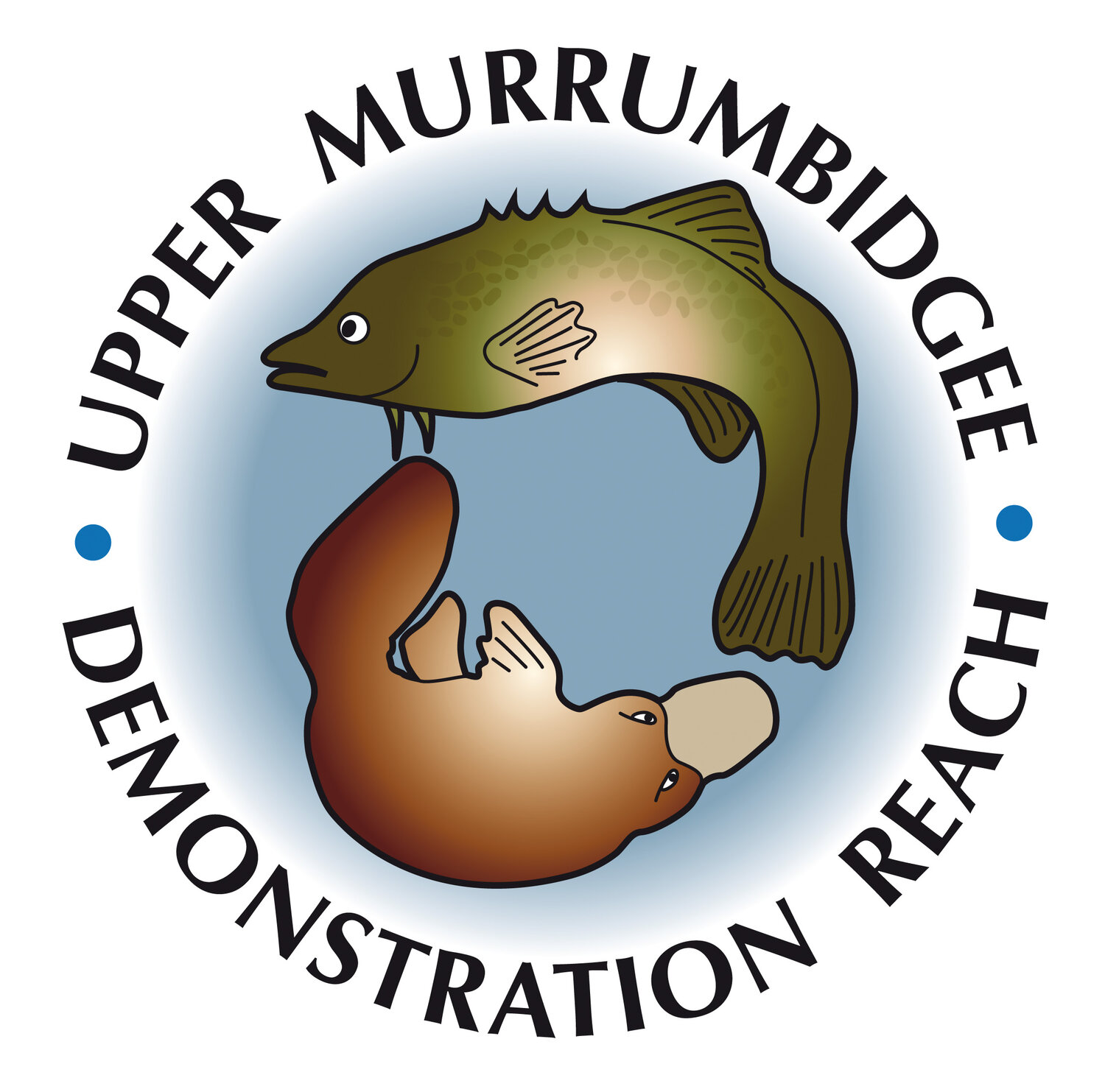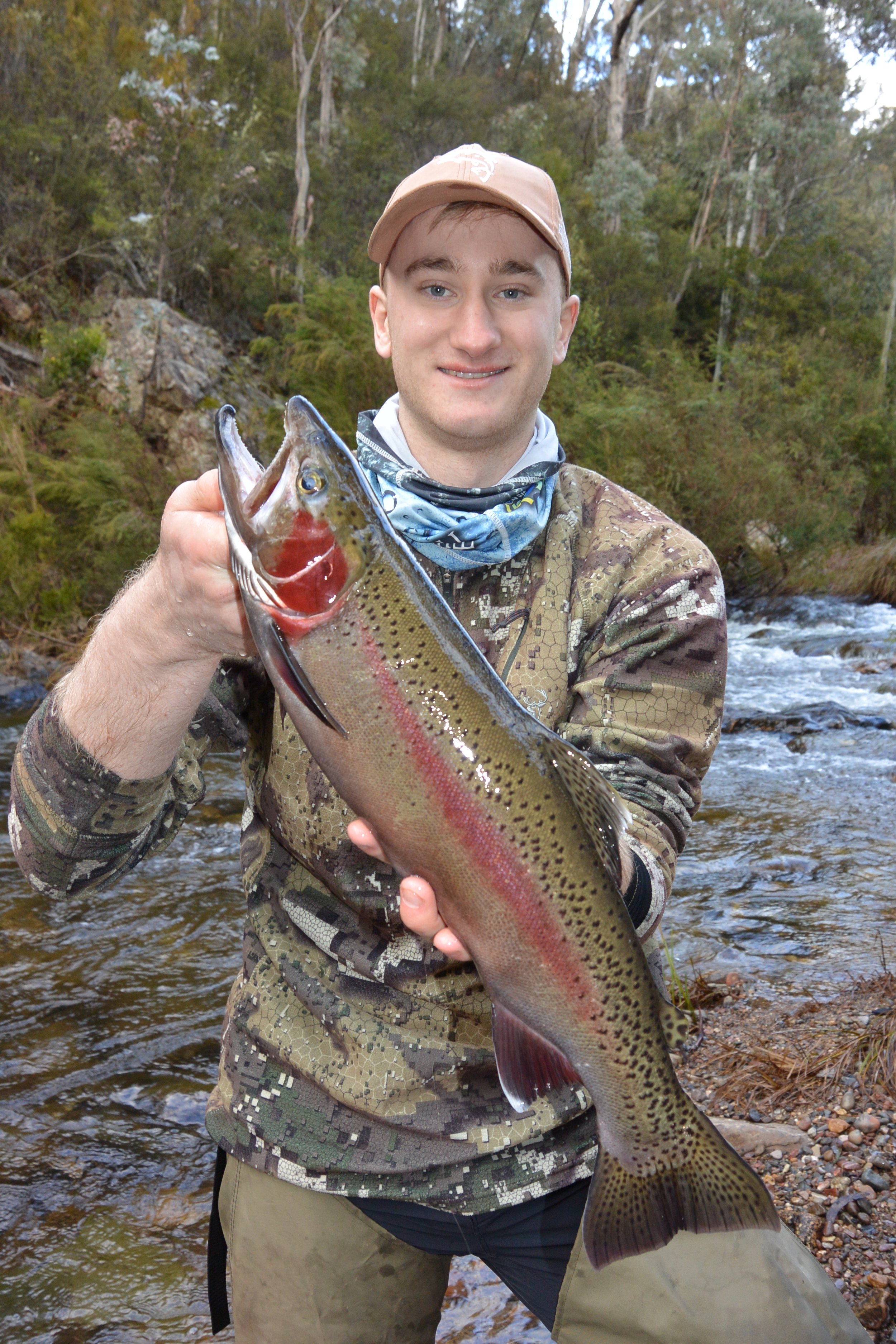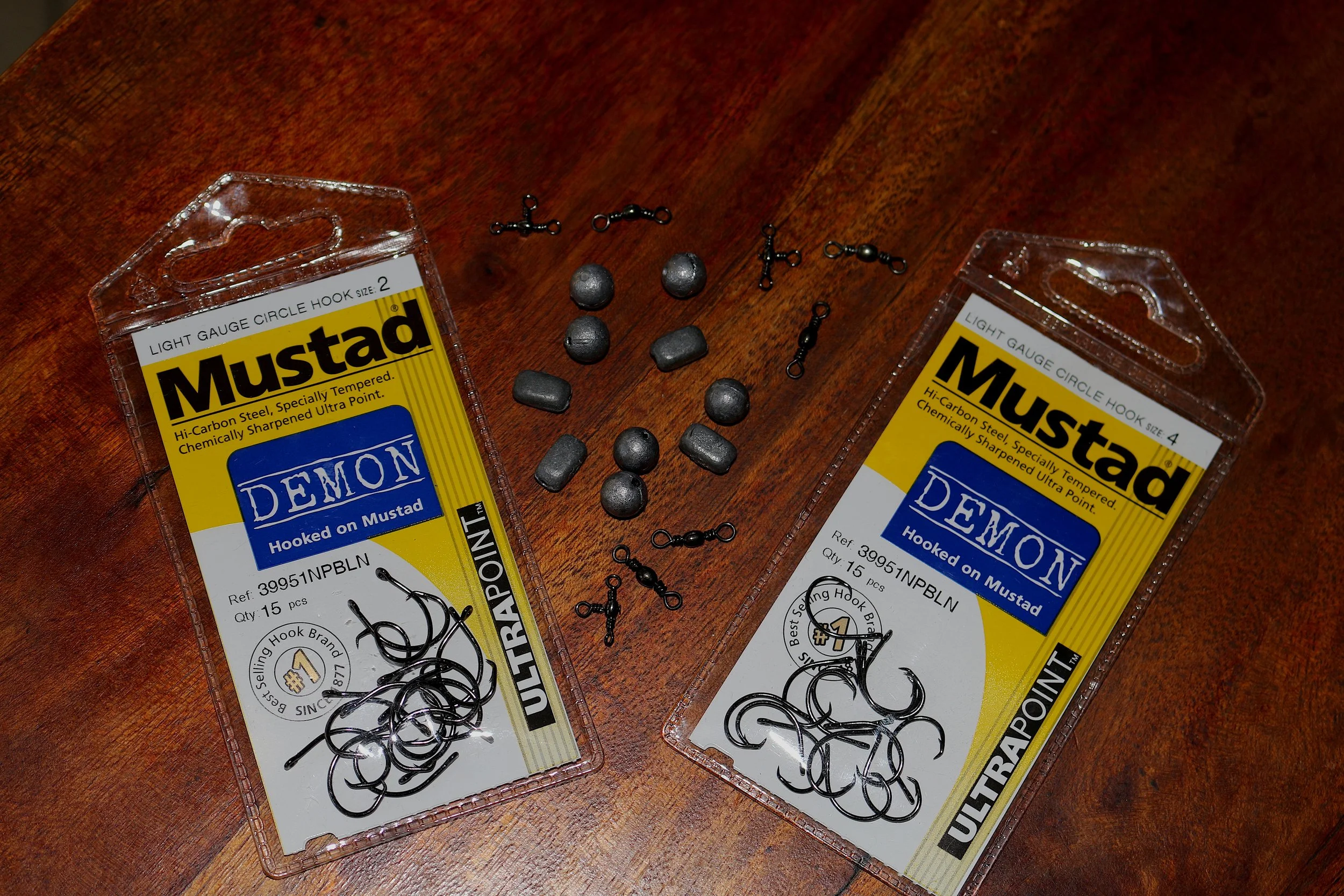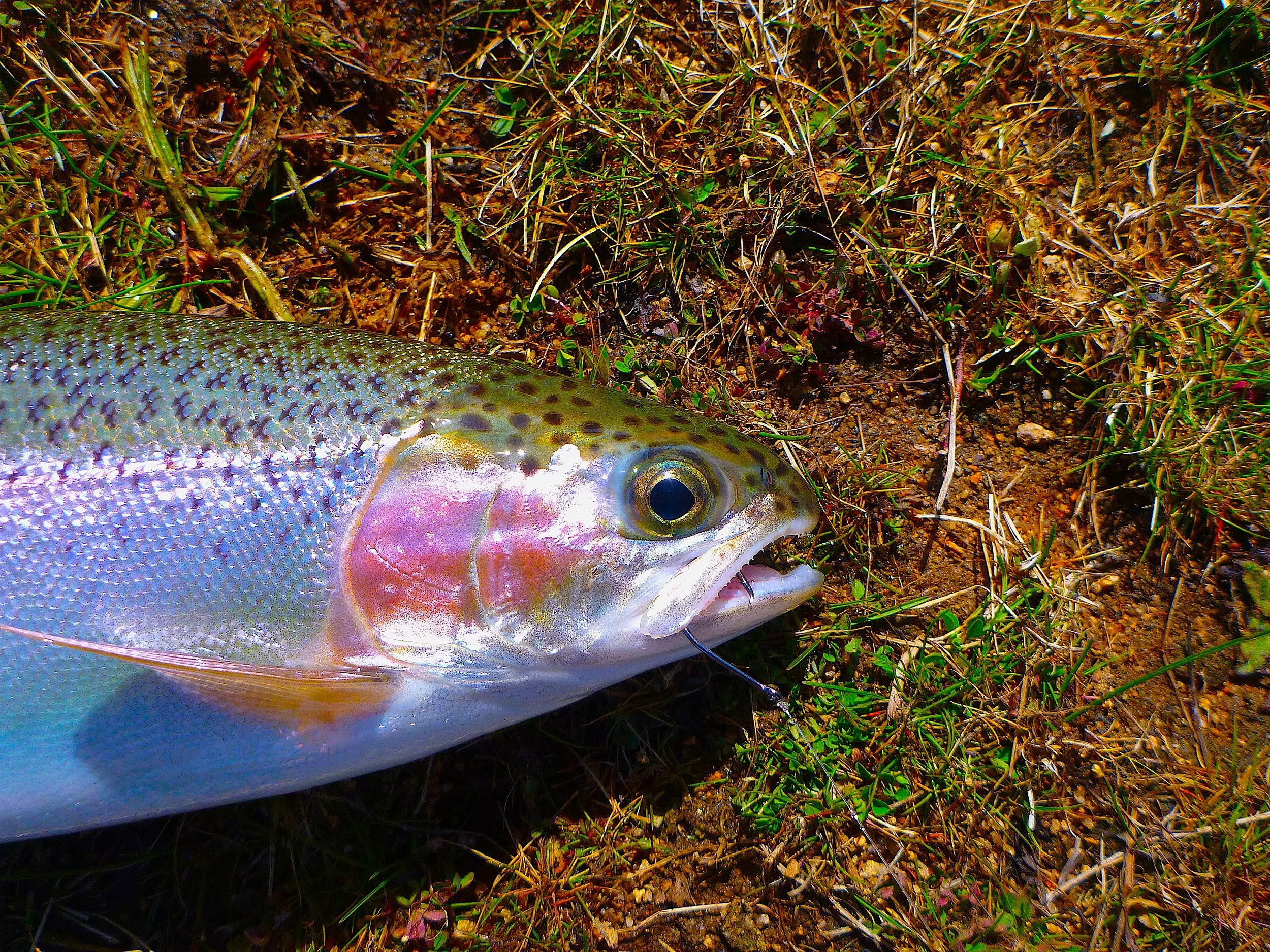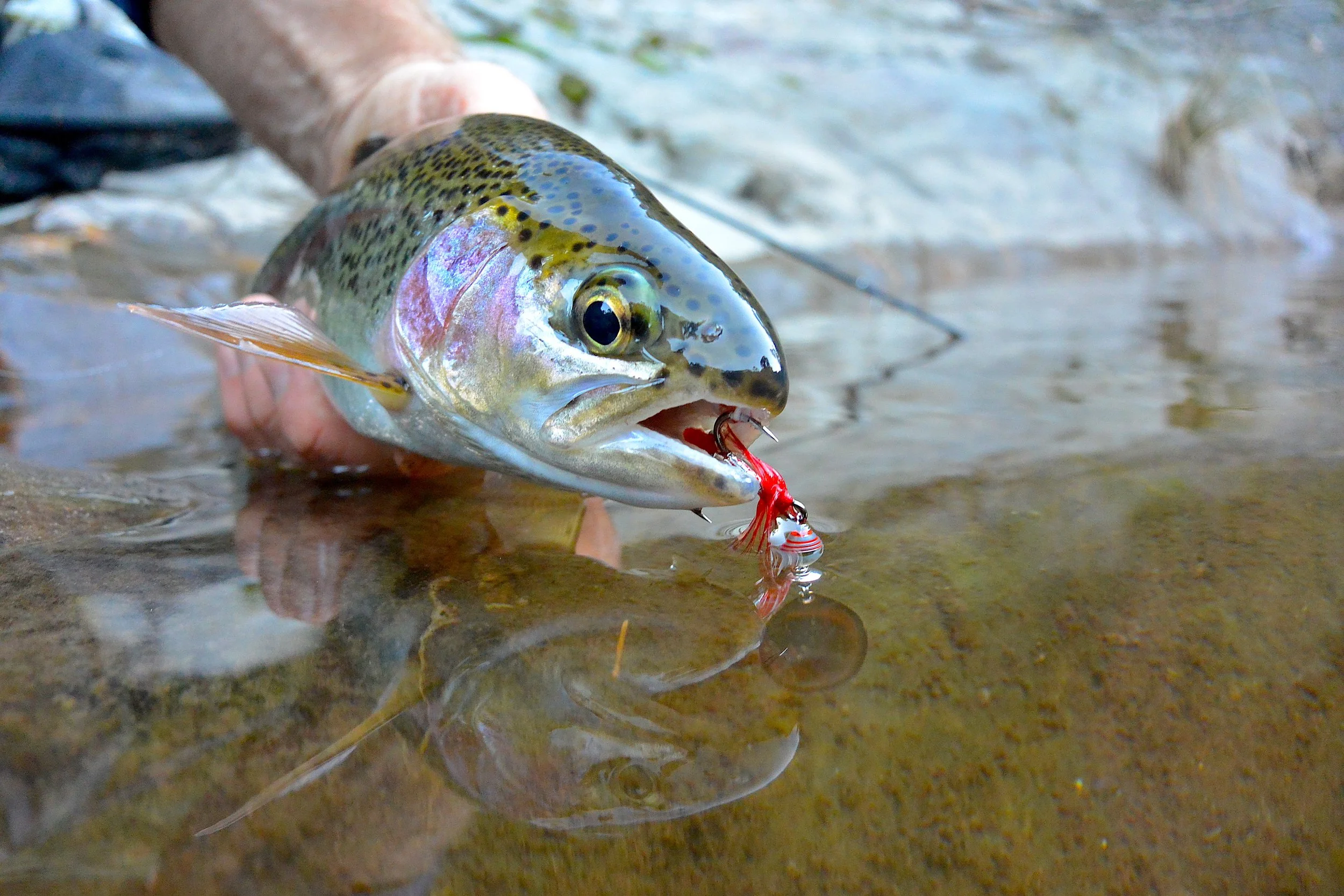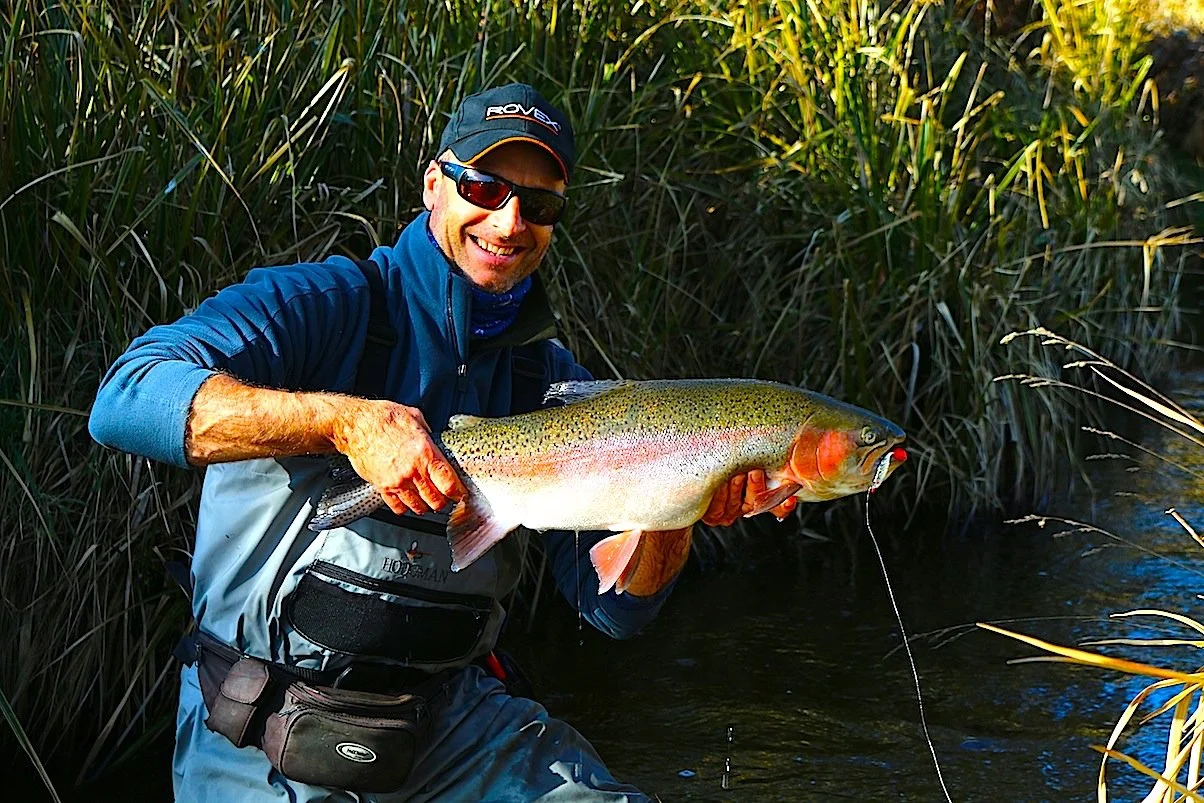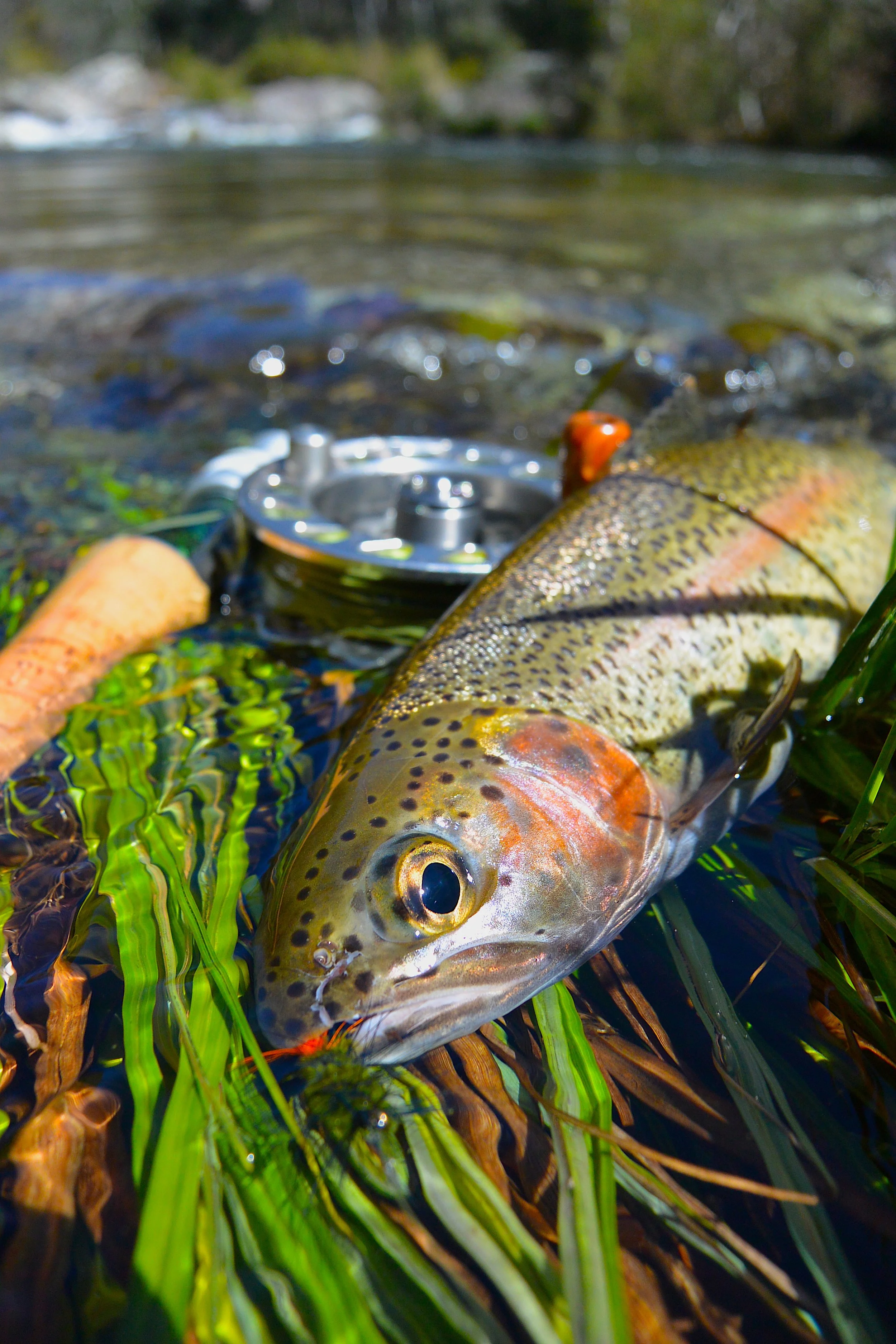Rainbow Trout (Oncorhynchus mykiss).
Rainbow trout were introduced into Australia in 1894 from their native North America and are a highly regarded freshwater sports fish across the globe. They thrive in cooler, well oxygenated waterways but have adapted and flourished in many lakes, reservoirs, and rivers across NSW, the ACT, Victoria, South Australia, and southern QLD. Rainbows have been stocked extensively by Fisheries departments, Acclimatisation Societies, and local fishing club programs with great success. There are now many areas of self-sustaining populations of fish, however through natural attrition and angling pressure, regular stockings are required to maintain healthy numbers of trout in some locations. As well as being a revered sport fish, they are also a much sort after table fish, and a highly valued recreational species.
Where to Fish
Rainbow trout can be found and caught is a wide range of areas on lakes and rivers. Environmental cues and geographical features of a waterway are the indicators that will provide an insight in where to fish.
In lakes and other large open bodies of water, prominent points, weed beds, and wind-blown (exposed) shorelines are excellent areas to concentrate your fishing efforts. These features will harbour and hold a variety of food items which in turn will attract trout.
In rivers and streams, rapids, rifles, and shingle covered runs are prime rainbow trout areas to cast lures and flies. The head of large, slow moving pools or holes, as well as overhanging bankside trees and shrubs are other favoured locations to find quality trout
Rainbow Trout may be found in a wide range of lakes and rivers alike.
Photos supplied by Andy McGovern.
Bait Fishing
Bait fishing for trout is a hugely popular recreational activity with Rainbow Trout frequently taken on garden, tiger and scrub worms, shrimps, small yabbies, bardi grubs, and artificial baits such as PowerBait.
The best rig when using natural baits such as worms, yabbies, shrimps, or grubs is a running sinker above a short length of leader line down to the hook. To create this rig thread a small running sinker onto your main line and attach to a swivel. Now attach a length of leader line between 400 and 600mm onto the other end of the swivel. Leader line should be between 8lb and 16lb breaking strain. Finally tie a size 4 to 1/0 circle or octopus style hook to the other end of the leader. Hook size should match the size of your bait. As will all bait fishing, sinker size should be kept to a minimum. Sinker size should be sufficient to aid in casting distance when fishing in windy conditions (or when a long cast is required) as well as heavy enough to hold your bait on the bottom.
Using circle hooks when bait fishing will result in mouth hooked fish. This will make it easier to remove the hook and reduce gut hooking small, undersized fish.
Photos supplied by Andy McGovern.
A plump Rainbow Trout taken on worms using a small circle hook.
Lure and Fly Fishing
Rainbow Trout are an aggressive species and are attract by flash, movement, and water displacement. Below is a breakdown of different groups of lures and flies for those targeting rainbows
Spinners
Spinners have been around since the 1960s and are one of the most popular trout lures available. They are cheap, simple to use and highly affective on aggressive trout in both streams and lakes. The rotating blade on the main shaft of the lure sends out flashes of light combine with a enticing vibration that feisty rainbows cannot resist. A slow, methodical retrieve is all that is required to get the blade rotating and generate a strike.
A feisty stream Trout taken on a spinner with a flash of red.
Photos supplied by Andy McGovern.
Diving Minnows (Hard Bodies)
Small diving minnows that imitate a foraging bait fish will trigger a violent strike from big rainbows. Bright colours in variations of pink, orange, yellow, and red work well. Minnows should be 40mm to 70mm in length with diving depths between 0.5 and 1.5metres. A straight forward medium paced retrieve will produce results. Varying the speed of your retrieve is a highly effective way to improve the strike rate and catch more fish.
Soft Plastics
The life like appearance and action of soft plastics has revolutionised lure fishing trout. Minnow and grub imitations worked slowly near the bottom will catch trout of all sizes. If fishing muddy banks on a lake, allow your soft plastic to sink to the bottom and the impart small hops and flicks as you retrieve the lure. Yabbie, shrimp, and even centipede imitation soft plastic bodies are also available and can produce trophy sized rainbow trout from lakes.
Winged Lures
The most popular winged lure is the Tasmanian Devil and is a mainstay of anglers who troll for trout. The tantalising side to side swaying action of winged lures is highly attractive to trout. Trolling lures by following the contours of the shoreline is the most popular method to catch trout.
A big Rainbow Trout taken from a small spring fed creek in late Autumn.
Photos supplied by Andy McGovern.
Tackle
A 1.6m to 2.2m rod matched with a 3000-4000 sized threadline reel spooled with 8-14lb main line is ideal for bait fishing. A similar outfit can double as a spinning outfit, however, reducing the breaking strain of your main line to between 6lb and 10lb will facilitate smooth, seamless casting with light lures all day long.
If flyfishing is your preferred technique or if you are a beginner, then for most river, stream and lake scenarios a 6-weight outfit with a floating line is an ideal general purpose set up. Black, brown, and olive coloured Woolly Buggers are the most reliable fly available. Buggers are perfect for working the edges of lakes and rivers.
Fly fishing is a rewarding and productive way to catch trout through the warmer months.
Photos supplied by Andy McGovern.
Size
In rivers and streams fish average between 25cm to 40cm. Lake fish are often slight larger and carry more weight for their length due to the abundance of food. A rainbow trout of 60cm or greater is considered a trophy capture.
Bag, Size Limit and Closed Season in NSW/ACT
It is important to remember that trout seasons observe a closed and open season. Please consult the relevant fishing guides for the state.
NSW Southern Trout fishing guide.
NSW Northern Trout fishing guide.
It is important to remember that trout seasons observe a closed and open season.
Photos supplied by Andy McGovern.
By-Catch
Depending on which area you are fishing there is a chance you may hook Macquarie perch, River Blackfish, and even Trout Cod when targeting Rainbow Trout. Remember all three species are totally protected (in NSW, VIC and the ACT) and should be released unharmed, as quickly as possible. If you are unsure of the identity of the species it is best to release it unharmed without removing it from the water.
If you are land-based fishing and happen to hook one of the protected species, it is important you do not drag or pull these species onto the mud, sand, and dry grass as this will damage the protective slime covering their body. Removing this protective slime will leave the fish susceptible to infection and bacterial growth once released back into the water. Leave the fish in the shallow water by the edge and remove the hooks while the fish is in the water. A fishing glove or wet towel can assist in subduing the fish while you remove the hooks.
Fishing Tip
Rainbow trout are a highly aggressive species that can move quickly when in pursuit of a food item. When lure or fly fishing try increasing the speed of your retrieve to a fraction faster than walking pace to generate interest. Imparting bursts of speed during a single retrieve can also give the appearance of a fleeing small fish, which will ignite the predatory instincts of a rainbow trout.
Help Our Fisheries and Waterways
While undertaking recreational fishing activities you may come across various species of fish. Some streams such as those in the the upper Murrumbidgee catchment upstream of the ACT do not contain species such as Redfin. You can help fish scientists and fisheries managers to protect these species and maintain fishing grounds through logging fish sightings on Feral Fish Scan.
Download the Feral Fish Scan app.
Does this sound important?
If you are inspired by our work and our focus, learn about how to practically support this work.
